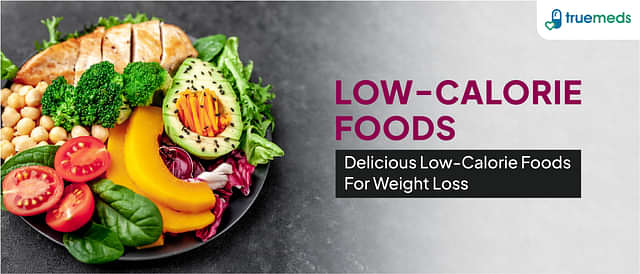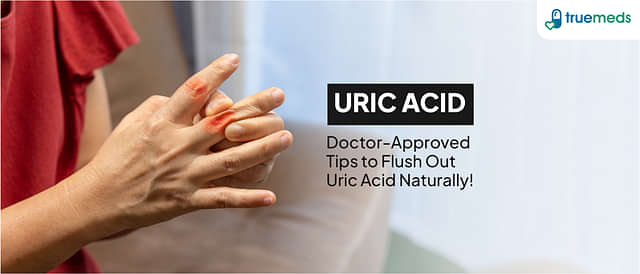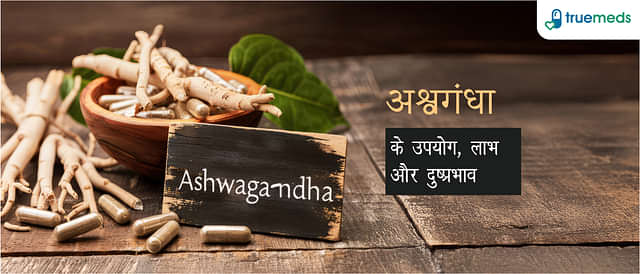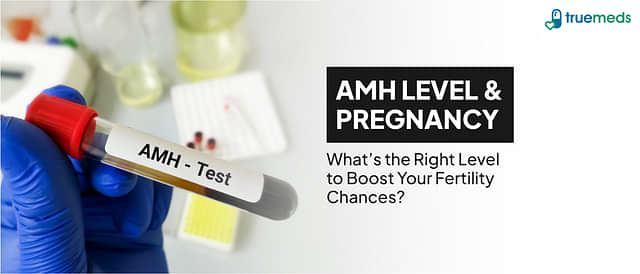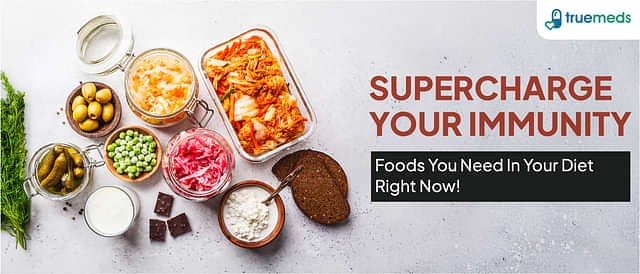Top 10 Potential Benefits of Horse Gram (Kulthi Dal)
Last updated on : 30 Nov, 2025
Read time : 9 min
Horse gram, also known as kulthi dal, is a highly nutritious legume that has been a staple in traditional Indian cuisine, particularly in the southern regions. It is often used in dals, soups, and traditional recipes for its nutritional and health-supporting properties. Its consumption has been linked to several traditional remedies and is gaining scientific attention for its diverse phytochemical profile [1].
Nutritional Profile of Horse Gram
Kulthi Dal is a powerhouse, packed with an impressive array of essential nutrients. Here is the nutritional value of 100 g of horse gram, based on analysis [2]:
| Nutrient | Amount |
| Carbohydrates | 57.3 g |
| Moisture | 11.8 g |
| Fat | 0.5 g |
| Crude Protein | 22.0 g |
| Energy | 321 kcal |
| Fibre | 5.3 g |
| Mineral Matter (Total Ash) | 3.1 g |
| Iron | 7.6 mg |
| Calcium | 28 mg |
| Nicotinic Acid (Niacin) | 1.5 mg |
| Carotene (Provitamin A) | 11.9 IU |
| Phosphorus | 390 mg |
| Vitamin B1 (Thiamine) | 0.42 mg |
- Protein-Rich: Horse gram boasts a high protein content, with some varieties containing up to 25% protein [2].
- Antioxidant Powerhouse: The seeds are laden with polyphenols, flavonoids, and proteins, which are particularly concentrated in the seed coat and are studied for their potential health effects [3].
- Complex Carbohydrates and Fibre: The carbohydrate fraction includes a significant amount of resistant starch (up to 43.4%) that is fermented in the colon, contributing to its unique nutritional profile and fibre content, which aids digestion [4].
- Mineral and Vitamin Rich: Horse gram is an excellent source of various minerals, including calcium, phosphorus, and iron, ensuring a well-rounded dietary composition.
Did You Know: Horse gram is highly valued in agriculture and animal husbandry due to its resilience and nutritional benefits. In animal husbandry, horse gram is used as fodder, especially for cattle, horses, and poultry, because of its high protein and energy content. This practice highlights its robust nutritional profile, supporting livestock health, growth, and milk production.
Exploring the Potential Health Benefits of Horse Gram
Horse gram offers a wide range of potential health benefits, stemming from its rich composition of protein, fibre, antioxidants, and essential minerals. These nutrients work together to support overall health and well-being, making horse gram a valuable addition to a balanced diet.
1. May Support Healthy Weight Management
Because it is high in plant-based protein and dietary fiber, horse gram may help promote satiety (feeling full) for longer. This can potentially support calorie control and weight management when integrated into a balanced, calorie-appropriate diet [3].
2. Potential Role in Blood Sugar Management
Studies suggest that horse gram may help manage blood sugar levels by potentially slowing down carbohydrate absorption [3]. This characteristic makes it a suitable choice for individuals with diabetes or those looking to manage their sugar intake.
3. May Contribute to Lowering Cholesterol
The dietary fiber in horse gram may help reduce the absorption of LDL (‘bad cholesterol’), thereby supporting cardiovascular health [3]. Additionally, bioactive compounds such as polyphenols and phytates in horse gram may contribute to the management of cholesterol levels, potentially elevating HDL (‘good cholesterol’), making it a heart-healthy dietary component [3].
4. May Offer Skin Health Protection
Although direct evidence on horse gram’s specific benefits for skin disorders is limited, its high antioxidant content (polyphenols and flavonoids) may help protect skin cells from oxidative damage caused by free radicals [3]. The essential minerals and vitamins also support overall health, which indirectly reflects on skin vitality.
5. Supports Bone Health
With essential minerals like calcium, phosphorus, and magnesium, horse gram can contribute to the maintenance of bone density and strength, and may thus play a supportive role in preventing conditions like osteoporosis [2].
6. Traditional Use for Menstrual and Reproductive Health
In traditional Ayurvedic practices, horse gram is sometimes used to help regulate menstrual cycles and manage associated symptoms. Its rich iron content and overall nutritional profile may support general female reproductive health [2].
7. Potential to Support Male Reproductive Health
The antioxidant properties of horse gram may help mitigate oxidative stress, a factor known to negatively impact sperm quality [3]. However, clinical research is needed to confirm a direct impact on male reproductive outcomes.
8. May Support Liver Function
Horse gram contains various bioactive compounds, including antioxidants and phytochemicals, which may help protect liver cells [3]. These compounds can neutralise free radicals and reduce oxidative stress, which are crucial factors in maintaining liver health.
9. Aids Digestive Regularity
As an excellent source of dietary fiber, horse gram plays a crucial role in maintaining digestive health. It helps regulate bowel movements, may alleviate constipation, and supports the growth of beneficial gut bacteria. Soaking and sprouting horse gram before consumption can further enhance its digestibility and nutritional absorption [4].
10. Traditional Use for Kidney Stones
Traditionally, horse gram has been used to assist in the prevention and removal of kidney stones. Its mild diuretic properties may promote increased urine flow, which can help flush out small crystalline deposits [2]. Compounds like tannins and saponins are being studied for their potential to inhibit stone formation [3]. It is critical to consult a physician for any diagnosed kidney stone condition.
How To Use Horse Gram (Kulthi Dal)
Horse gram is a versatile and nutritious legume that can be easily incorporated into your daily diet.
- To use horse gram effectively, start by soaking the seeds overnight (for 8-12 hours) or sprouting them to enhance their nutritional value and reduce antinutrients like phytic acid [4].
- You can then boil the soaked or sprouted seeds with water and salt until they are soft, or use a pressure cooker for faster cooking.
- Roasting the seeds before grinding them into a powder can add a unique flavour to various dishes.
- Horse gram can be added to a variety of recipes, such as soups, stews, curries, and dals, where it pairs well with various spices and herbs. You can also make horse gram flour by drying and grinding the seeds, which can be used in baking and making snacks.
- Another popular way to consume horse gram is by soaking the seeds and blending them with water to make a nutritious drink, often consumed on an empty stomach for its traditional health benefits.
Important Considerations and Potential Side Effects
While horse gram is highly nutritious, it is important to consume it in moderation and prepare it correctly.
- Digestive Discomfort: The high fiber and oligosaccharide content in horse gram can lead to side effects such as bloating, gas, and flatulence, especially when consumed in large quantities or without proper soaking/cooking [4].
- Acidity: Horse gram is traditionally considered to have a ‘hot’ potency, and may cause hyperacidity or increase existing acidity in some individuals, particularly if consumed on an empty stomach or excessively.
- Antinutrients: Like other legumes, raw horse gram contains antinutrients, such as phytic acid, which can interfere with mineral absorption. Soaking, sprouting, or cooking significantly reduces the level of these compounds [4].
Conclusion
Horse gram, or kulthi dal, is a nutritional powerhouse that offers a wide range of traditional and scientifically supported potential health benefits. Including this versatile legume in your diet, and preparing it appropriately, may support weight management, blood sugar stability, heart health, and digestive regularity, as part of a varied and balanced diet.
Frequently Asked Questions (FAQ)
Is it good to eat horse gram daily?
Consuming horse gram (kulthi dal) daily can be part of a healthy diet due to its high nutritional value, protein, and fiber content. However, maintaining overall dietary balance and moderation is key to avoiding potential digestive discomfort or nutritional imbalances.
What are the side effects of horse gram?
Side effects of eating horse gram, especially if unprepared or consumed in excess, may include bloating, gas, flatulence, and potential allergic reactions. Soaking and cooking can significantly mitigate these issues.
Is horse gram hot or cold (as per traditional medicine)?
Yes, in traditional medicine systems like Ayurveda, horse gram is considered to have a ‘hot’ (Ushna Virya) nature. This quality is why it may cause hyperacidity in some individuals, so it should be consumed in moderation by those prone to acidity.
What are the medicinal uses of horse gram?
Horse gram is a nutrient-rich legume that may help support blood sugar management, digestive regularity, and a healthy weight. Traditionally, it is also used in various cultures to support kidney health, liver function, menstrual comfort, and general wellness during seasonal changes.
Who should not eat horse gram?
Individuals with a history of hyperacidity, gastric ulcers, or those who experience allergic reactions to horse gram should limit or avoid its consumption. Always consult a healthcare provider if you have pre-existing medical conditions.
Does horse gram cause acidity?
Yes, horse gram can cause hyperacidity in some individuals due to its traditional ‘hot’ nature and potential to increase gastric acid secretion. It should be consumed in moderation by those prone to acidity.
References
[1] Mehra, A., & Upadhyaya, M. (2021). Macrotyloma uniflorum Lam. A traditional crop of Kumaun Himalaya and ethnobotanical perspectives. ResearchGate, 148–150. https://www.researchgate.net/publication/353185578_Macrotyloma_uniflorum_Lam_A_TRADITIONAL_CROP_OF_KUMAUN_HIMALAYA_AND_ETHNOBOTANICAL_PERSPECTIVES
[2] Malik, S., Yadav, A., & Shrestha, R. (2023). Therapeutic potential and nutritional benefits of horse gram: A review. Asian Journal of Dairy and Food Research. https://doi.org/10.18805/ajdfr.dr-2158
[3] Handa, V., Kumar, V., Panghal, A., Suri, S., & Kaur, J. (2017). Effect of soaking and germination on physicochemical and functional attributes of horsegram flour. Journal of Food Science and Technology, 54(13), 4229–4239. https://doi.org/10.1007/s13197-017-2892-1
[4] Bhatia, N., & Sehgal, S. (2009). Nutritional and anti-nutritional evaluation of horse gram (Macrotyloma uniflorum) treated by different processing methods. International Journal of Food Sciences and Nutrition, 60(7), 646–655. https://doi.org/10.1080/09637480802131908
Disclaimer
Our healthcare experts have carefully reviewed and compiled the information presented here to ensure accuracy and trustworthiness. It is important to note that this information serves as a general overview of the topic and is for informational purposes only. It is not intended to diagnose, prevent, or cure any health problem. This page does not establish a doctor-patient relationship, nor does it replace the advice or consultation of a registered medical practitioner. We recommend seeking guidance from your registered medical practitioner for any questions or concerns regarding your medical condition.
Popular Articles
Recommended Articles
Recent Articles
Company
About UsHealth ArticleHealth StoriesHealth LibraryDiseases & Health ConditionsAyurvedaUnderstanding Generic MedicinesAll MedicinesAll BrandsNeed HelpFAQSecuritySubscribe
Registered Office Address
Grievance Officer
Download Truemeds
Contact Us
Our customer representative team is available 7 days a week from 9 am - 9 pm.
v4.11.0
2026 - Truemeds | All rights reserved. Our content is for informational purposes only. See additional information.
Our Payment Partners









.jpg)



